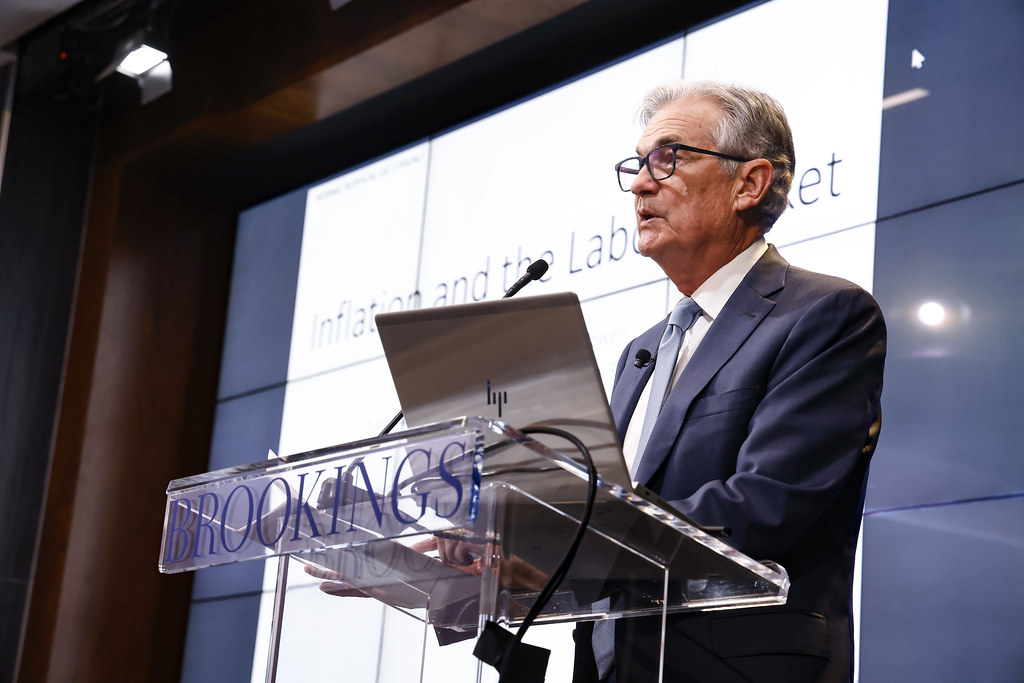Key takeaways:
- Powell’s comments set the stage for Fed rate cuts.
- Economists now expect cuts at the very next Fed meeting.
- Rate cuts could lower borrowing costs and boost spending.
- Americans may see cheaper loans and a stronger stock market.
Federal Reserve Chair Jerome Powell spoke clearly this week. His remarks lifted hopes for rate cuts soon. As a result, many economists now expect the first cut at the next meeting. This shift could reshape borrowing costs and market trends.
What Jerome Powell Said
During a public talk, Powell noted that inflation has eased closer to the Fed’s target. He also highlighted that job growth remains solid. He stressed that the Fed will watch new data before moving rates. This mix of optimism and caution surprised many.
Moreover, Powell pointed out that prices have cooled but not fallen too fast. He noted that some sectors still face price pressures. Thus, the Fed will act carefully. He suggested that if data stay favorable, the Fed could cut rates soon.
How Economists Reacted
Economists quickly revised their models after Powell spoke. They now see a high chance of rate cuts at the next meeting. In fact, many expect two or more cuts by year’s end. Futures markets have already priced these expectations in.
Some experts say that markets may even see a cut this month. Others caution that any spike in inflation data could delay the move. Still, the consensus is clear: rate cuts look likely.
Why Rate Cuts May Come Soon
Inflation, though lower, still sits above the Fed’s 2 percent goal. Meanwhile, some areas of the economy show signs of slowing. Therefore, cutting rates could give a gentle boost. Lower rates make borrowing cheaper for homes, cars, and businesses.
As a result, people may spend more and invest more. In turn, that can support jobs and growth. Thus, rate cuts could help sustain the economic expansion.
When Rate Cuts Could Happen
The Fed meets again late this month. Before then, officials will review fresh inflation and jobs reports. If those numbers stay on track, Powell may greenlight a rate cut. However, any surprise increase in inflation could push the cut back.
Investors will watch every data release closely. While most now bet on a cut, a shift could trigger a sharp market move.
Potential Impact on You
If the Fed slashes rates, your loan rates may drop. Mortgage and auto loan rates could fall, lowering your monthly bills. Credit cards with variable rates might also get cheaper.
On the flip side, savings accounts and CDs may pay less interest. You might earn less on your deposits. To offset that, you could look into higher-yield investments.
Lower rates can also boost the stock market. Investors often see cuts as a sign of healthy growth. Therefore, share prices could rise. Yet, a falling dollar might make travel abroad pricier.
Balancing Act for the Fed
The Fed’s dual goals are stable prices and strong employment. Cutting rates too quickly risks reigniting inflation. But waiting too long could slow growth or hurt jobs. Thus, the Fed will use incoming data to strike the right balance.
Powell and his team will track wage growth, spending, and global trends. They will weigh each factor before deciding on rate cuts.
Looking Ahead
As the next meeting nears, all eyes will be on key reports. These include consumer price data and employment figures. Together, they will show whether the economy can handle lower rates.
If inflation remains tame and jobs stay robust, expect rate cuts soon. However, any unexpected shift could change that timeline.
Final Thoughts
Jerome Powell’s clear remarks have reshaped market expectations. Economists now see rate cuts starting at the next meeting. This move could lower borrowing costs, boost markets, and support growth. Yet the Fed will proceed with care, using new data to guide each step.
Overall, rate cuts may help the economy avoid slowing down. They could also keep inflation from rising again. As always, the Fed aims to balance growth and price stability.
Frequently Asked Questions
What does a rate cut mean for my loan rates?
A rate cut lowers the federal funds rate, which often leads banks to reduce their own rates. As a result, mortgage, auto loan, and credit card rates may fall, easing your monthly payments.
How do rate cuts affect inflation?
Rate cuts make borrowing cheaper, spurring spending on goods and services. Increased demand can push prices up over time. However, if inflation is already low, the effect may be modest.
Will rate cuts boost the stock market?
Often, yes. Investors view rate cuts as a sign of growth support. Lower borrowing costs can help companies earn more, which may lift share prices. Yet markets also react to earnings and global news.
How can I prepare for rate cuts?
If you have variable-rate debt, cuts could lower your interest costs. But savings returns may drop. Consider diversifying your investments and reviewing loan options to make the most of rate changes.

